When we type “Flickr” or “Facebook” or “YouTube” into a browser, we seek to enter social networks and enjoy secure communication and interaction with a vast number of online users from around the world.
Most of us take for granted that these words are understood by others in the same way. But what if rather than type these words on a keyboard we paint them on the walls of slums in Mali, Cambodia or Vietnam. Their meanings would certainly change.
It’s beyond arguing, for most of us, that technologies now exert an unprecedented control over our lives. Google Maps tells us where we are, Record Future where we will be and Facebook who our friends are.
In recent years the Italian artist Filippo Minelli has produced land art that consists of writing the names of social networks and corporations on the walls of slums in developing countries. Minelli has stated that the aim of the project (which is called “Contradictions”) is “to point out the gap between the reality we still live in and the ephemeral world of technologies.” But there seems to be more at stake philosophically, given the different political and linguistic meanings these words acquire in their new contexts.
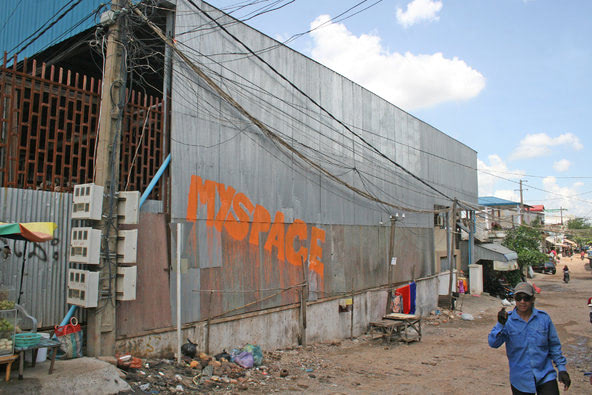

“MySpace” (2007); Phnom Penh, Cambodia
Minelli’s works are presented as photo essays beyond the borders of the West that suggest not only interpretation but intervention. They are, in effect, calls to overcome the status quo, the state of political and social disengagement and apathy that these technological networks have created. (Minelli says that he works in collaboration with residents of a location if the places are not abandoned, or has people who know the area and take him to a location.)
“The lack of emergency,” as Heidegger explained in the late ’30s, “is the greatest where self-certainty has become unsurpassable, where everything is held to be calculable and, above all, where it is decided, without a preceding question, who we are and what we are to do.”
Minelli, by traveling to the slums of Cambodia and painting “Second Life” on its walls, is indicating the contradiction between these two worlds (advanced technological capitalism and its social detritus) — and it is also disclosing the limits imposed by these social networks. These networks, and the Internet in general, are the culmination of Being’s (human existence) replacement with beings (objects) — with the global technological organization of the world.
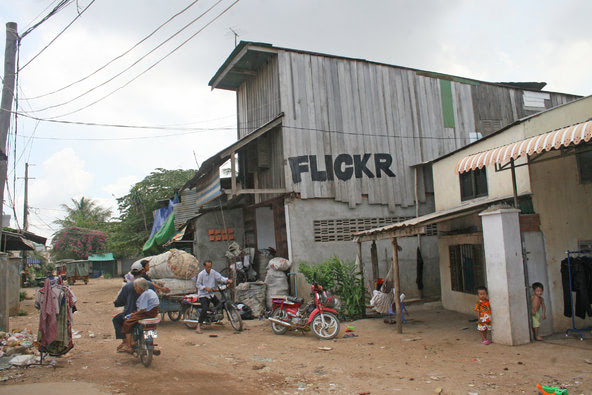
“Flickr” (2007); Phnom Penh, Cambodia
Existence is now not only defined topologically, but it is also predictable: the future can even be forecast through online data mining. In this condition, where knowledge and existence are framed beforehand by dominant social networks or programs, there is little space for human freedom. Minelli’s photographs overcome these limits by creating a sort of cognitive disruption: seeing “YouTube” painted on the walls of a slum in Cambodia rather than in our own screens. But how does Minelli manage to involve us in this linguistic and political contradiction?
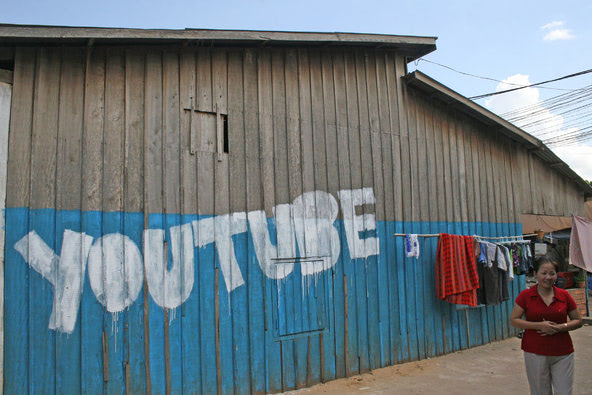

“YouTube” (2007); Phnom Penh, Cambodia
As most readers of Jacques Derrida know, when he altered the French word (différence) by substituting an a for the e—“différance”— he was producing a graphic modification (“it is read, or it is written, but it cannot be heard”) in order to overcome the traditional metaphysical precedence of truth and presence over writing and difference. Minelli’s dissemination of these social networks is very similar to Derrida’s disordering of metaphysical truth because it forces us to encounter these words in a different context.
The Italian artist’s photographs are not points of arrival for our aesthetic contemplation but rather points of departure to change the world. The fact that Minelli has now extended his project to different words (“Control-Alt-Delete” and “Democracy”) on dangerous borders (Qualandyia Checkpoint) and in unstable nations (Mauritania) is an indication that his work is driven by hope of emancipation, that is, salvation.
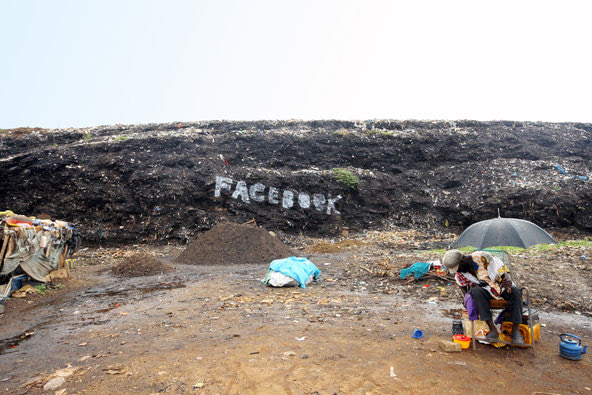

“Facebook” (2008); Bamako, Mali
Story via NY Times.
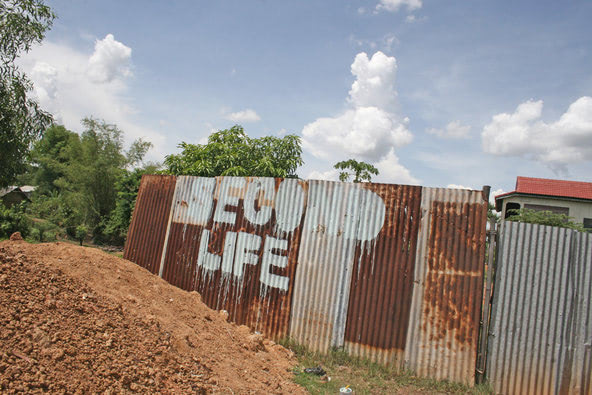
Share your thoughts and join the technology debate!
Be the first to comment